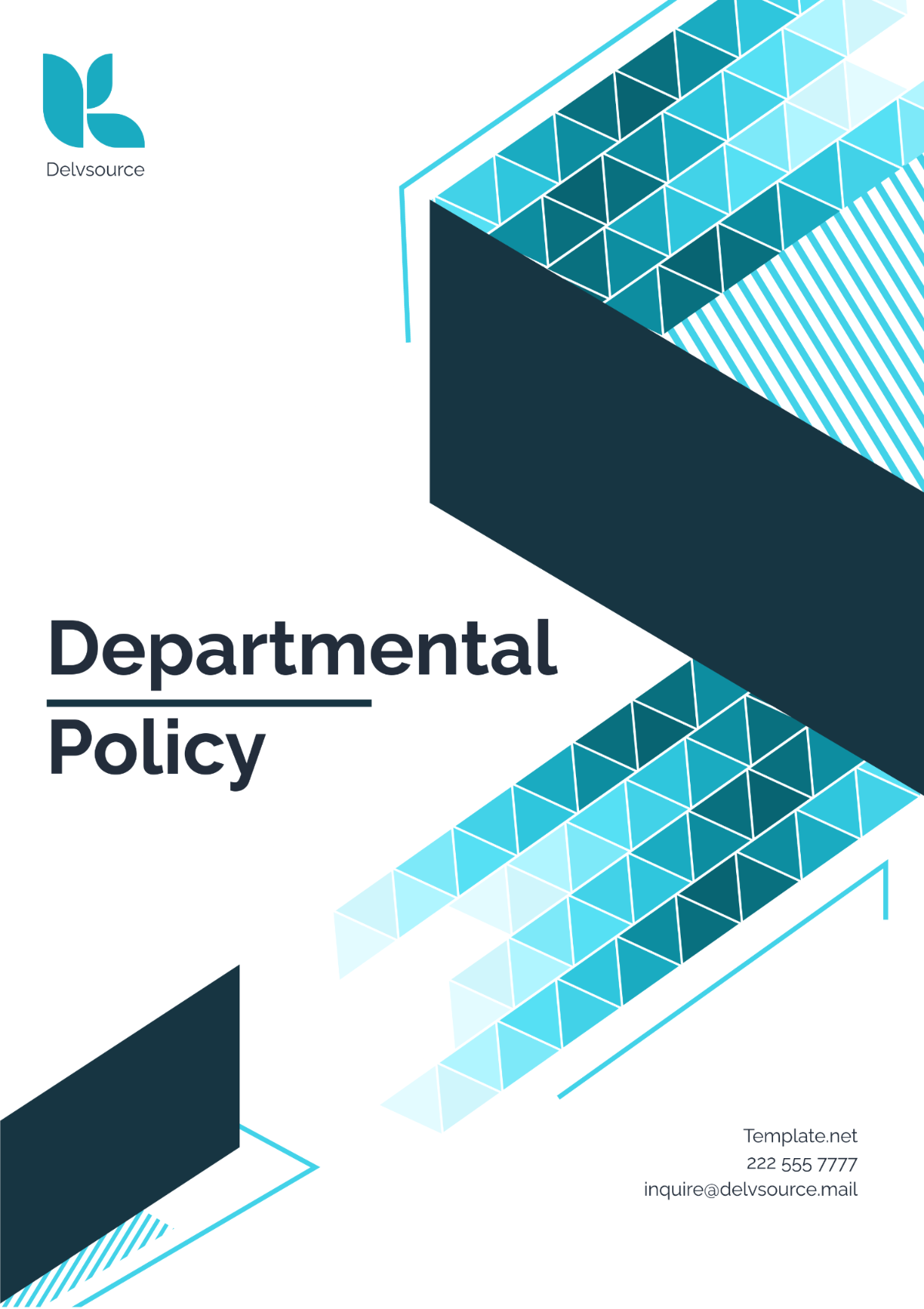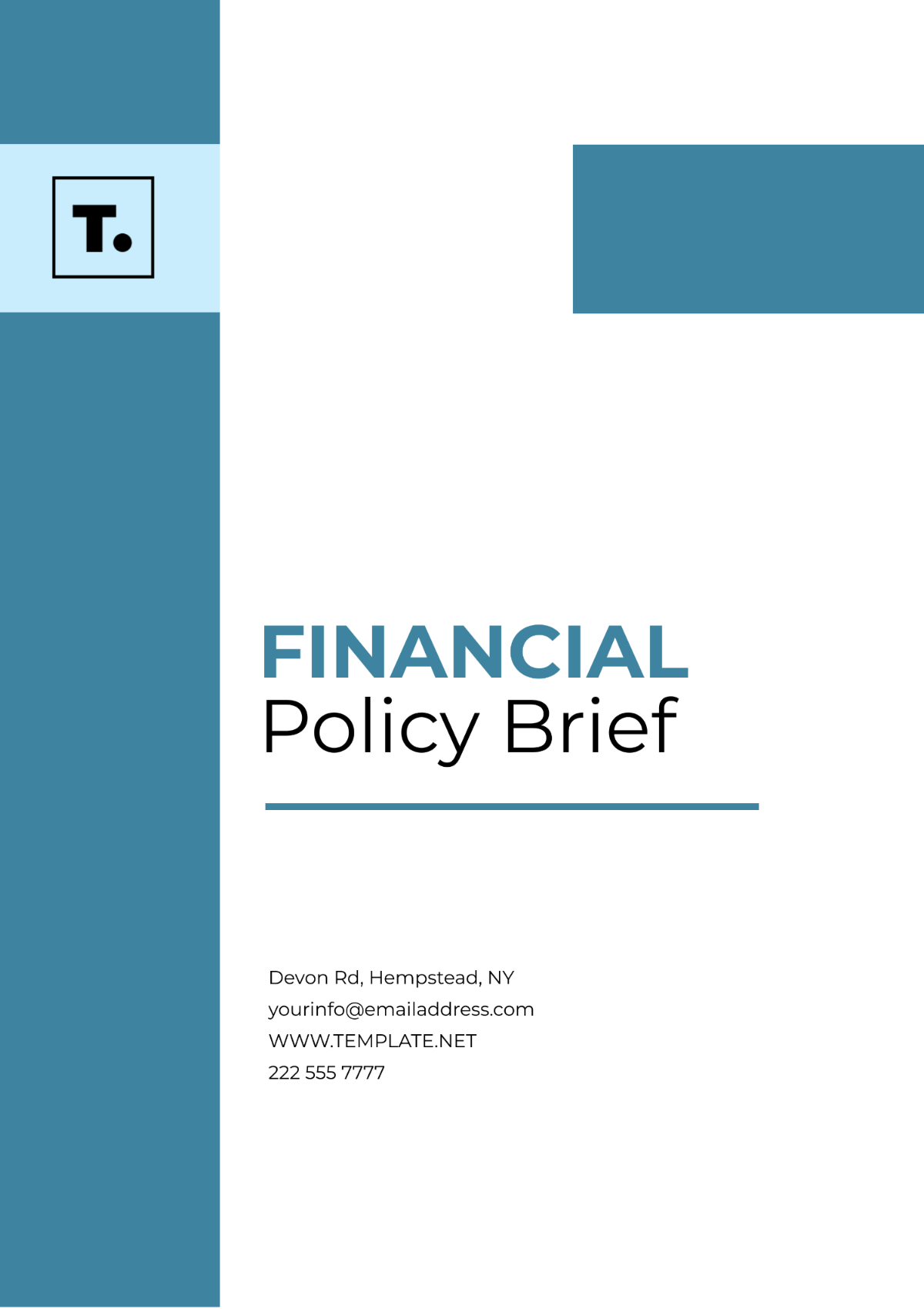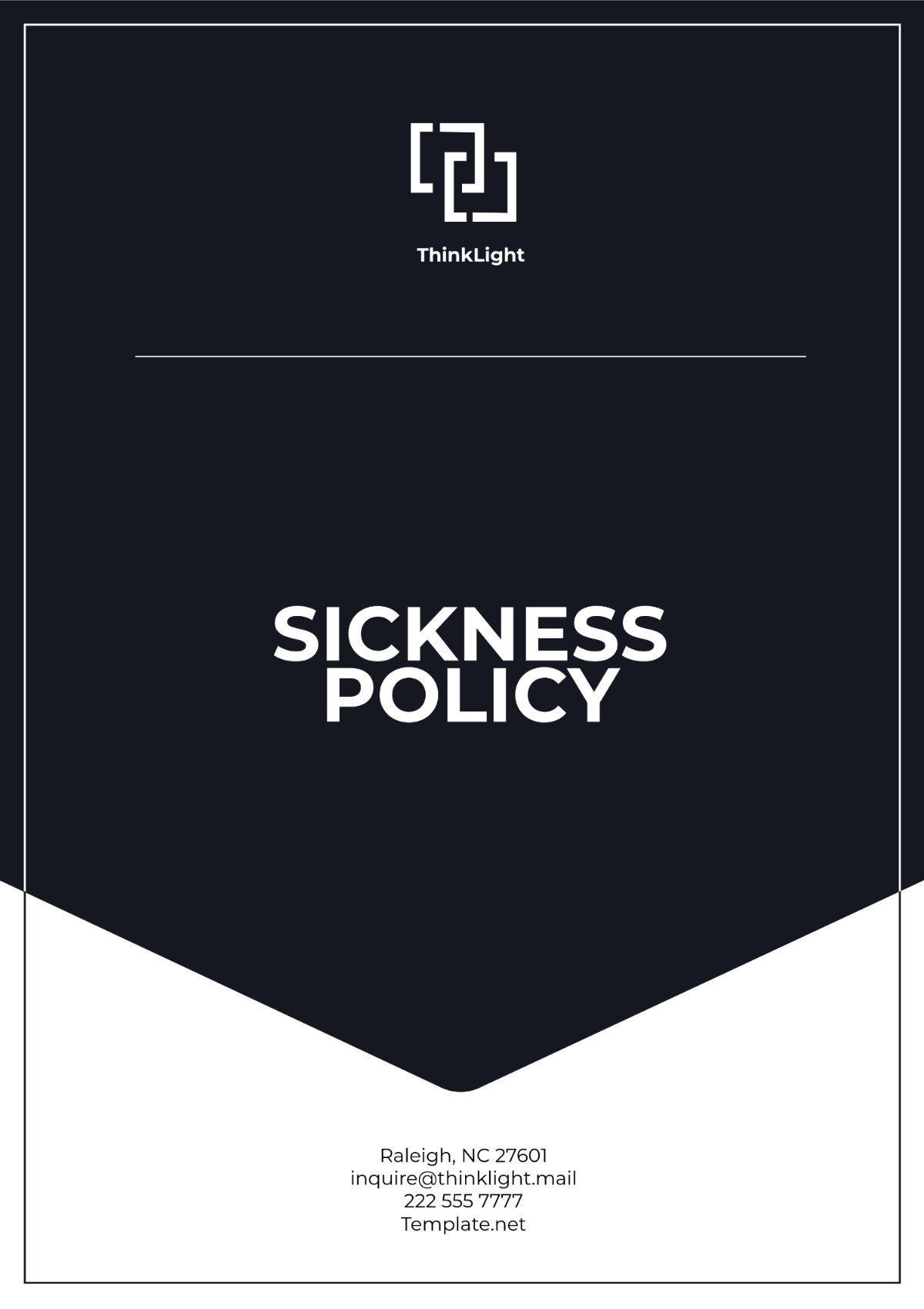School Policy Review Procedure
I. Introduction
The purpose of the School Policy Review Procedure at [Your Company Name] is to establish clear guidelines for the systematic review and revision of school policies. This ensures that all policies remain relevant, effective, and aligned with the school's goals and regulatory requirements.
A. Objectives
Ensure Policy Relevance: Regular reviews ensure that policies remain applicable to current educational practices and legal standards. This helps maintain the effectiveness and compliance of school operations.
Facilitate Continuous Improvement: By reviewing policies, the school can identify areas for improvement and implement changes that enhance the educational environment.
Promote Stakeholder Involvement: Engaging various stakeholders in the review process ensures that policies reflect diverse perspectives and meet the needs of the school community.
B. Scope
All School Policies: The review procedure applies to all existing policies, including administrative, academic, and student-related policies. This comprehensive approach ensures consistency and coherence across the school's operations.
Regular and Ad Hoc Reviews: Policies are reviewed regularly based on a set schedule and additionally as needed in response to new issues or changes in regulations. This flexibility allows the school to remain adaptive and proactive.
Stakeholder Participation: The review process involves input from teachers, administrators, students, and parents. This inclusive approach helps create well-rounded and effective policies.
II. Review Schedule
The following table outlines the regular review schedule for school policies. This schedule ensures that all policies are reviewed at least once within a specified period:
Policy Category | Review Frequency | Responsible Party |
|---|---|---|
Administrative | Every 2 years | School Board |
Academic | Every 3 years | Academic Committee |
Student-Related | Annually | Student Affairs Office |
A. Administrative Policies
Administrative policies are reviewed every two years by the School Board. This frequency ensures that the policies governing the school's operations are up-to-date and effective.
B. Academic Policies
Academic policies are reviewed every three years by the Academic Committee. This allows for adjustments based on educational trends and changes in curriculum standards.
C. Student-Related Policies
Student-related policies are reviewed annually by the Student Affairs Office. Given the dynamic nature of student needs and regulatory requirements, an annual review is essential to ensure responsiveness and relevance.
Regular review of school policies according to a structured schedule helps maintain the school's operational efficiency and educational quality. Each policy category is reviewed by the responsible party to ensure that it aligns with the school's mission and objectives.
III. Review Process
The following table provides an overview of the steps involved in the policy review process:
No. | Step | Description |
|---|---|---|
1 | Initiation | Triggering the review process |
2 | Stakeholder Input | Gathering feedback from stakeholders |
3 | Drafting Revisions | Creating draft revisions of the policies |
4 | Review and Approval | Evaluating and approving the revisions |
5 | Implementation | Putting the revised policies into effect |
A. Initiation
Identifying Policies for Review: The review process is initiated by identifying policies that are due for review based on the schedule. This ensures a systematic approach to policy maintenance.
Assigning Review Teams: Specific teams or committees are assigned to review the identified policies. These teams consist of individuals with relevant expertise and experience.
Setting Timelines: Clear timelines are established for each step of the review process to ensure timely completion. This includes deadlines for feedback, drafting, and approval stages.
B. Stakeholder Input
Gathering Feedback: Feedback is collected from various stakeholders, including teachers, students, parents, and administrators. This ensures that the review process is inclusive and considers diverse perspectives.
Conducting Surveys and Meetings: Surveys and meetings are used to gather detailed input on the policies under review. This helps identify specific areas that require changes or improvements.
Analyzing Feedback: The collected feedback is analyzed to identify common themes and issues. This analysis guides the drafting of policy revisions.
C. Drafting Revisions
Drafting New Policy Language: Based on the feedback analysis, draft revisions are created for each policy. This includes updating language, adding new sections, and removing outdated content.
Consulting Legal Experts: Legal experts are consulted to ensure that the draft revisions comply with all relevant laws and regulations. This step is crucial for maintaining legal compliance.
Reviewing Drafts Internally: The draft revisions are reviewed internally by the assigned review teams. This internal review ensures that the drafts are accurate and comprehensive.
D. Review and Approval
Presenting Drafts for Approval: The draft revisions are presented to the relevant decision-making bodies, such as the School Board or Academic Committee, for approval. This formal approval is necessary for implementing the changes.
Incorporating Feedback: Any feedback or suggestions from the decision-making bodies are incorporated into the final drafts. This iterative process ensures that the revisions are well-considered and effective.
Final Approval: The final drafts are approved by the decision-making bodies. This approval signifies the official acceptance of the revised policies.
E. Implementation
Communicating Changes: The approved policy revisions are communicated to all stakeholders. This includes informing teachers, students, parents, and administrators about the changes and their implications.
Training and Support: Training sessions and support materials are provided to help stakeholders understand and implement the new policies. This ensures smooth and effective implementation.
Monitoring Implementation: The implementation of the revised policies is monitored to ensure compliance and effectiveness. Any issues or challenges are addressed promptly.
A structured review process ensures that all school policies are regularly updated and aligned with the school's goals and legal requirements. Engaging stakeholders and incorporating their feedback enhances the relevance and effectiveness of the policies.
IV. Stakeholder Roles and Responsibilities
The following table outlines the roles and responsibilities of various stakeholders in the policy review process:
Stakeholder Group | Role | Responsibility |
|---|---|---|
School Board | Oversight and Approval | Approving policy revisions |
Academic Committee | Policy Review and Drafting | Reviewing and drafting academic policies |
Student Affairs | Student-Related Policy Management | Managing and reviewing student policies |
Teachers | Feedback and Implementation Support | Providing feedback and implementing policies |
A. School Board
Providing Oversight: The School Board provides oversight for the entire policy review process. This ensures that the process is conducted systematically and effectively.
Approving Revisions: The board is responsible for approving all policy revisions. This formal approval is necessary for the implementation of the changes.
Ensuring Compliance: The board ensures that all policy revisions comply with legal and regulatory requirements. This helps maintain the school's legal standing.
B. Academic Committee
Reviewing Academic Policies: The Academic Committee is responsible for reviewing and drafting revisions to academic policies. This ensures that the policies support effective teaching and learning.
Consulting Experts: The committee consults with educational experts to ensure that the policies reflect best practices and current educational trends.
Drafting Revisions: The committee drafts revisions to academic policies based on stakeholder feedback and expert consultations. This ensures that the policies are relevant and effective.
C. Student Affairs Office
Managing Student Policies: The Student Affairs Office is responsible for managing and reviewing student-related policies. This includes policies on behavior, attendance, and student services.
Engaging Students: The office engages students in the review process to gather their input and feedback. This ensures that the policies reflect student needs and perspectives.
Drafting Revisions: The office drafts revisions to student-related policies based on feedback and analysis. This helps create policies that support student well-being and success.
D. Teachers
Providing Feedback: Teachers provide valuable feedback on policies based on their classroom experiences and interactions with students. This feedback is crucial for identifying areas that need improvement.
Implementing Policies: Teachers are responsible for implementing the revised policies in their classrooms. This ensures that the policies are put into practice effectively.
Supporting Students: Teachers support students in understanding and complying with the revised policies. This helps create a positive and productive learning environment.
Involving various stakeholders in the policy review process ensures that the policies are comprehensive, relevant, and effective. Each stakeholder group plays a vital role in reviewing, drafting, and implementing the policies.
V. Communication and Training
The following table outlines the communication and training steps for implementing revised policies:
No. | Step | Description |
|---|---|---|
1 | Announcement | Communicating policy changes |
2 | Training Sessions | Conducting training for stakeholders |
3 | Support Materials | Providing support materials |
A. Announcement
Informing Stakeholders: Policy changes are announced to all stakeholders, including teachers, students, parents, and administrators. This ensures that everyone is aware of the revisions and their implications.
Using Multiple Channels: Announcements are made using multiple channels, such as emails, newsletters, and meetings. This ensures that the information reaches all stakeholders effectively.
Providing Details: The announcements include detailed information about the changes, the reasons for the revisions, and how they will be implemented. This helps stakeholders understand the context and importance of the changes.
B. Training Sessions
Organizing Training: Training sessions are organized for stakeholders to help them understand and implement the revised policies. These sessions provide practical guidance and support.
Interactive Workshops: Interactive workshops are conducted to engage stakeholders and address their questions and concerns. This helps ensure that the training is effective and comprehensive.
Ongoing Support: Additional support is provided as needed to help stakeholders implement the policies. This includes follow-up sessions and one-on-one assistance.
C. Support Materials
Creating Materials: Support materials, such as guides, FAQs, and checklists, are created to help stakeholders understand and implement the policies. These materials provide clear and concise information.
Distributing Materials: The support materials are distributed to all stakeholders through various channels. This ensures that everyone has access to the information they need.
Updating Materials: The materials are regularly updated to reflect any changes or new information. This ensures that the support provided is accurate and up-to-date.
Effective communication and training are crucial for the successful implementation of revised policies. Providing clear information and practical support helps ensure that all stakeholders understand and comply with the policies.
VI. Monitoring and Evaluation
The following table outlines the steps for monitoring and evaluating the implementation of revised policies:
No. | Step | Description |
|---|---|---|
1 | Monitoring | Tracking policy implementation |
2 | Evaluation | Assessing policy effectiveness |
3 | Reporting | Communicating evaluation results |
A. Monitoring
Tracking Compliance: The implementation of revised policies is monitored to ensure compliance. This involves regular checks and observations to verify that the policies are being followed.
Collecting Data: Data is collected on the implementation process, including any issues or challenges encountered. This data is used to inform the evaluation process.
Engaging Stakeholders: Stakeholders are engaged in the monitoring process to provide feedback and insights. This helps identify any gaps or areas for improvement.
B. Evaluation
Assessing Impact: The impact of the revised policies is evaluated to determine their effectiveness. This involves analyzing data and feedback to assess the outcomes of the policies.
Identifying Areas for Improvement: The evaluation process helps identify areas where the policies can be improved. This includes addressing any issues or challenges that have been encountered.
Making Recommendations: Based on the evaluation, recommendations are made for further revisions or improvements to the policies. This ensures that the policies remain effective and relevant.
C. Reporting
Communicating Results: The results of the evaluation are communicated to all stakeholders. This includes sharing the findings, recommendations, and any proposed changes to the policies.
Using Multiple Channels: Reports are shared using multiple channels, such as meetings, newsletters, and emails. This ensures that the information reaches all stakeholders effectively.
Encouraging Feedback: Stakeholders are encouraged to provide feedback on the evaluation results and recommendations. This helps ensure that the policies continue to meet the needs of the school community.
Monitoring and evaluating the implementation of revised policies helps ensure their effectiveness and relevance. Regular assessment and feedback are crucial for continuous improvement and successful policy implementation.
VII. Continuous Improvement
Continuous improvement is an ongoing process that ensures the school policies remain effective, relevant, and aligned with the school's goals and regulatory requirements.
A. Fostering a Culture of Improvement
Encouraging Innovation: Encourage innovation and creative problem-solving among stakeholders. This fosters a culture of continuous improvement and helps identify new opportunities for enhancing policies.
Providing Ongoing Training: Provide ongoing training and professional development opportunities for stakeholders. This helps them stay informed about best practices and new developments in education.
Facilitating Collaboration: Facilitate collaboration among stakeholders to share ideas and best practices. This helps create a supportive environment for continuous improvement.
B. Regular Review and Feedback
Conducting Regular Reviews: Conduct regular reviews of school policies to ensure that they remain effective and relevant. This helps identify areas for improvement and make necessary adjustments.
Gathering Stakeholder Feedback: Regularly gather feedback from stakeholders to inform the review process. This ensures that the policies reflect the needs and perspectives of the school community.
Implementing Changes: Implement changes based on the review and feedback process. This helps ensure that the policies are continuously improved and updated.
C. Utilizing Data and Analytics
Collecting Comprehensive Data: Collect comprehensive data on policy implementation and outcomes. This helps inform the review and evaluation process and identify areas for improvement.
Analyzing Data: Analyze the collected data to identify trends and patterns. This helps inform decision-making and develop targeted solutions for policy improvement.
Making Data-Driven Decisions: Use data and analytics to make informed decisions about policy changes and improvements. This ensures that the policies are based on evidence and best practices.
Continuous improvement is essential for maintaining the effectiveness and relevance of school policies. By fostering a culture of improvement, regularly reviewing policies, and utilizing data and analytics, the school can ensure that its policies support its goals and meet the needs of the school community.
VIII. Conclusion
Regular review and revision of school policies are essential for maintaining their relevance, effectiveness, and compliance with regulatory requirements. A structured review process, involving various stakeholders, ensures that the policies reflect the needs and perspectives of the school community. Effective communication, training, and ongoing support are crucial for successful policy implementation.
By fostering a culture of continuous improvement, the school can ensure that its policies remain aligned with its goals and support a positive educational environment. Regular monitoring and evaluation help identify areas for improvement and ensure that the policies continue to meet the evolving needs of the school community. Through these efforts, [Your Company Name] can maintain a high standard of educational excellence and operational efficiency.

















































